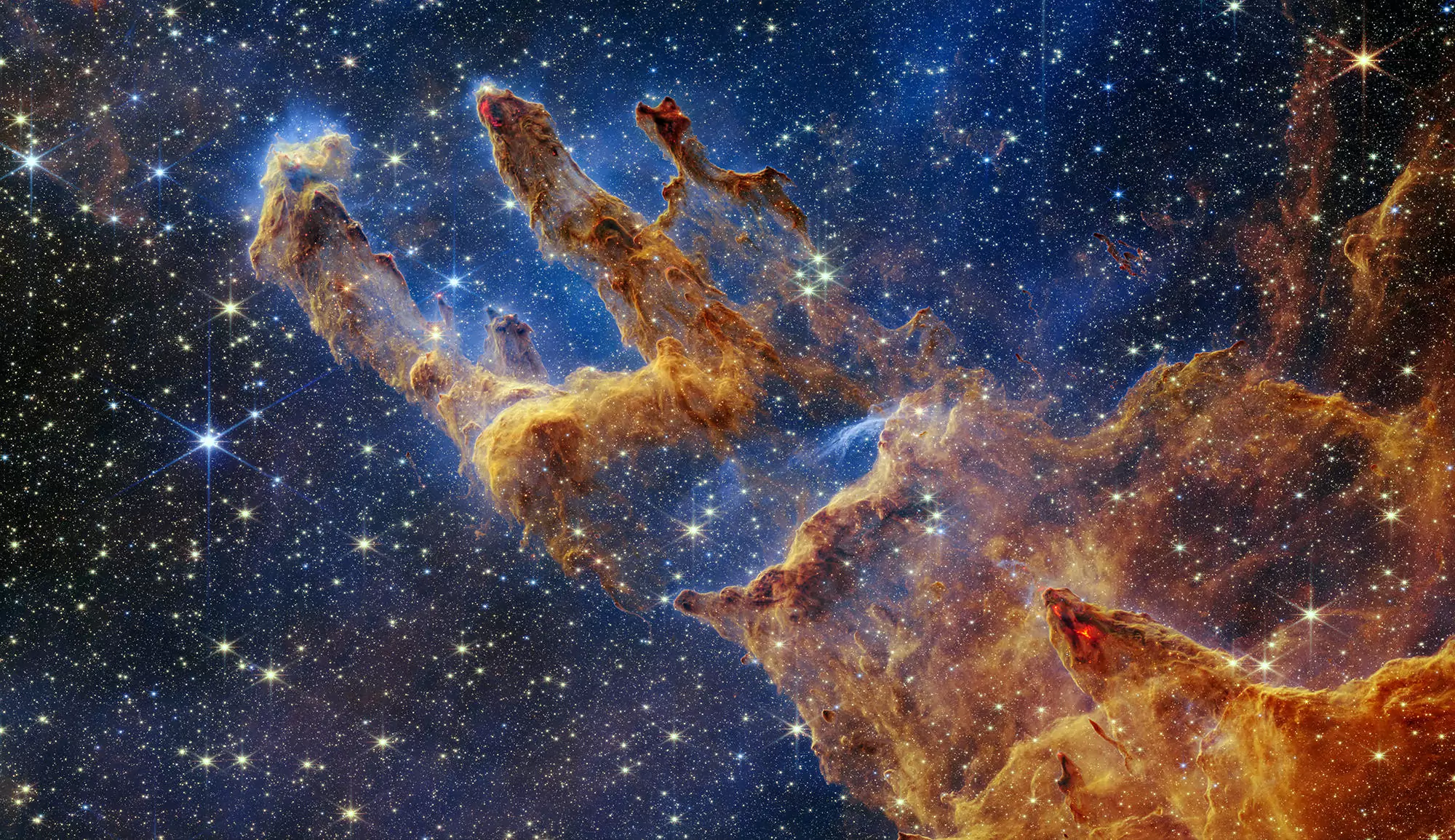Inflation has been proposed more than 25yrs ago to solve the problem of latness and the horizon, problem, among others ; i.e. to explain why regions in the sky much more distant than a light path from the Big-Bang (the horizon size) are observed with exactly the same radiation temperature. These regions apparently should not be connected, and paradoxically they are homogeneous. Inflation assumes they come from the same causally connected region, which has been inflated considerably. What produces inflation ? The hypothesis of Grand Unification Theory (GUT) accounts for that. GUT unifies the strong interaction with the weak and electromagnetic interaction. This unification should occur at temperatures of T= 1029K, only available in the early universe. Above and around this temperature, particles are submitted only to the unified force, and when the universe cools down below this, the symmetry between the forces is broken, producing a phase transition, which releases a gigantic energy. This formidable energy would drive the inflation. Inflation provides a generic mechanism for generating scalar (density) and tensor (gravitational wave) perturbations. A characteristic aspect of inflationary perturbations is that these are generated by quantum fluctuations. After their wavelength becomes larger than the Hubble radius (the horizon), these fluctuations are amplified and grow, becoming classical and decoupling from causal microphysical processes. Upon re-entering the horizon during the matter era, these classical perturbations seed the inhomogeneities which generate the cosmological structures upon gravitational collapse. Inflation predicts fairly generic features : a gaussian and nearly scale invariant spectrum of (mostly) adiabatic scalar and tensor primordial fluctuations. This spectrum is perfectly compatible with the highly precise wealth of data provided by the Wilkinson Microwave Anisotropy Probe (WMAP).
Simple inflation is described by a scalar field (the inflaton) which drives the dynamics of the scale factor of the expanding universe, plus small quantum fluctuations. In WMAP data, departures from scale invariance and gaussianity are determined by the departures from flatness of the potential, which can be measured by its derivatives. These derivatives can be combined into a hierarchy of dimensionless slow varying parameters.
Figure 1 : Predictions for r (the ratio of gravitational waves to density perturbations) as a function of the spectral scalar index ns for different values of the asymmetry |h| of the potential. A maximun value of ns is found : nsmax = 0.961528 and the corresponding r is r max = 0.114769. The absolute maximun value of r is r absolute-max = 0.16 and corresponds to a purely quadratic potential. For ns = 0.95 (present central observed value), 0.03 < r < 0.04 .
The team proposes a simple and realistic model to study the basic inflation, as a polynomial potential. In all cases, a formula is found [1], [2] relating the inflaton mass m with the Cosmic Microwave Background (CMB) observables : these CMB observables are the ratio of tensor to scalar perturbations, denoted r and the spectral index ns of scalar perturbations. For a spectrum of fluctuations with spectral index ns <1, the potential which fits the best the present data is a trinome with negative quadratic term. Were also computed the quantum effects including bosons and fermions. Quantum corrections to the primordial power spectra have been computed and expressed in terms of the CMB observables : ns, r [3], [4]. This allows to put constraints on the inflation models according to the present CMB + LSS (Large Scale Structures) data. In particular : (i) The model which best agrees with the current data is the trinomial potential with negative mass term and small initial inflaton amplitude. (ii) For the central value ns = 0.95, the predicted values for r and ns derivative are : 0.03< r <0.04 and -0.00070< d ns/d ln k <-0.00055 . (iii) A maximum value : nsmax = 0.961528 is found, and a corresponding maximum value for the ratio r : rmax = 0.114769 . Surprinsingly, the ratio r has two "branches" : that is, r is a two valued function of the spectral index ns in the interesting observable interval 0.96< ns< 0.9615 . Forthcoming CMB observations not only will determine the value of r but also they will determine which is its branch.
Références
- [1] "Clarifying Inflation Models : the Precise Inflationary Potential from Effective Field Theory and the WMAP data", D. Cirigliano, H. J. de Vega, N. G. Sanchez, Phys. Rev. D71, 103518 (2005)
- [2] "Clarifying Inflation Models : Slow-roll as an expansion in 1/Nefolds and No Fine Tuning", D. Boyanovsky, H. J. de Vega, N. G. Sanchez , Phys Rev D73, 023008 (2006)
- [3] "Quantum corrections to the inflaton potential and the power spectra from superhorizon modes and trac e anomalies", D. Boyanovsky, H. J. de Vega, N. G. Sanchez, Phys.Rev. D72, 103006 (2005).
- [4] "Quantum corrections to slow roll inflation and new scaling of superhorizon fluctuations", D. Boyanovsky, H. J. de Vega, N. G. Sanchez, Nucl Phys B747, 25 (2006)
- [5] "Particle decay during inflation : self-decay of inflaton quantum fluctuations during slow roll", D. Boyanovsky, H. J. de Vega, N. G. Sanchez, Phys.Rev. D71, 023509 (2005).
- [6] "Single Field Inflation models allowed and ruled out by the three years WMAP data", H. J. de Vega, N . G. Sanchez , astro-ph/0604136, (submitted to Phys Rev D).
Contact
- Norma Sanchez (Observatoire de Paris, LERMA, et CNRS)

